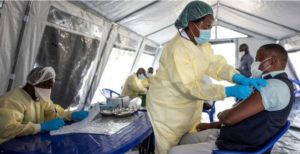China – Lunar New Year 2025
This Lunar New Year (LNY) is shaping up to be a festive season of exploration and connection as celebrating families and friends worldwide embrace the holiday spirit.
This year marks the year of the Snake, a symbol of wisdom, intuition, and transformation — themes that reflect the everchanging travel landscape. While some choose to celebrate at home, others have taken the opportunity to create memories in destinations far and near. With travel back in full swing, Trip.com Group has unveiled its latest LNY trends for 2025, showcasing how travellers are prioritising longer stays, meaningful experiences and unconventional destinations this year.
Data reveals strong year-on-year growth for cross-border travel, with travellers combining public holidays and annual leave to increase their length of stay.
Notably, in the Chinese mainland, a key source of LNY travel, New Year’s Eve is officially recognised as a holiday in 2025. This allows travellers to take just two days of leave for an eleven-day holiday. Korean travellers need to take one day for a nine-day break, while Singaporeans can create a five-day holiday with a single day off. As such, extended stays are a hallmark of this year’s LNY. On average, Asia-Pacific travellers will stay up to 10% longer this festive period.
Popular destinations frequented by travellers who celebrate LNY include Japan, Hong Kong, Singapore and the Chinese mainland. -PRNewswire Jan. 20, 2025 /
FITUR tourism exhibition
opens as sector fully recovers
The 2025 FITUR international tourism exhibition opened in Madrid, showcasing a robust recovery in the global tourism sector. Over 9,000 companies from 156 countries are participating in the event, which marks the 45th edition of the exhibition. Running until Jan. 26, FITUR is hosting 153,000 industry professionals, highlighting its significance as a key gathering for the global travel industry.
The United Nations Tourism (UN Tourism) announced Tuesday that 2024 saw international tourism fully recover from the COVID-19 pandemic, with 1.4 billion international travelers recorded. The organization forecasts further growth of 3-5 percent for 2025.
Spain, a leading global tourism destination, recently reported a record-breaking 94 million visitors in 2024, underscoring the sector’s resilience and strength.
Brazil takes center stage as the invited nation at this year’s FITUR. The exhibition also features 10 specialist areas, including cruises, sports tourism, film tourism, and language-learning tourism, reflecting the growing diversity of travel trends.
The Asia-Pacific region has reached 87 percent of its pre-pandemic tourist numbers, according to the UN Tourism. China has a strong presence at FITUR, with companies such as Enjoy China, Fantastica China, The Chinese Office of Tourism in Spain, and Focus China showcasing their offerings over the coming days. – Xinhua ,Jan. 22 ,2025
France holds off Spain
as world’s tourist favourite
Olympic host France retained its spot as the world’s top tourist destination in 2024 with 100 million visitors, holding off stiff competition from countries including Spain.
As world tourism returned to pre-pandemic levels with 1.4 billion people taking a trip abroad, according to the UN, both France and Spain announced record visitor numbers.
Spain said last week that a record 94 million foreign tourists flocked to the Iberian nation in 2024, a 10 percent increase from the previous year.
France, which hosted the Olympic Games in July – September 2024, welcomed two more million visitors in 2024, an increase of two percent compared with 2023.
But although France had more visitors, they spent less than those in Spain — 71 billion euros ($74-billion) compared with 126 billion euros in Spain.
France’s takings from international tourists rose by a total of 12 percent year-on-year, driven largely by Belgian, English, German, Swiss and US citizens, the tourism ministry said in a statement.
Despite the return of customers from Asia, the number of Chinese visitors to France remained 60 percent lower than before the pandemic.Thirty percent fewer Japanese visited the country than in 2019.
Good snowfall in late 2024 meanwhile drove a rebound for the end-of-year holidays as snow sports lovers flocked to the French ski slopes.
“The outlook for the first quarter of 2025 is very good, with visitor numbers on the rise,” the ministry statement added.- enca.com ,22 January 2025
Nepal hikes Everest climbing fee
KATHMANDU – Nepal has sharply increased Everest climbing permit fees and introduced a slew of measures aimed at controlling garbage pollution and preventing accidents on the planet’s tallest peak.
Under the revised rules, every two climbers must hire a guide to climb any mountain over 8,000 metres, including Everest.Under the revised mountaineering regulations, the royalty fee for foreigners climbing Everest from the normal south route in the spring season (March-May) has been raised to $15,000 from the current $11,000 per person.
The autumn season (September-November) climbing fee has increased from $5,500 to $7,500. At the same time, the permit cost per individual for the winter (December-February) and monsoon (June-August) seasons has risen from $2,750 to $3,750.The new rates will take effect on September 1, 2025.
The last royalty fee revision was made on January 1, 2015, when the government switched from a group-based system to a uniform fee of $11,000 per climber for the spring season from the normal route.
For Nepali climbers, the royalty fee for the normal route during the spring climbing season has doubled from Rs75,000 to Rs150,000.Climbing permits, previously valid for 75 days, will now be limited to 55 days. The reduced validity is aimed at streamlining climbing activities.
As per the amended rules, from the upcoming spring season, Everest climbers will be required to bring their poop back to base camp for proper disposal. Climbers must carry biodegradable bags to collect waste in the upper reaches.
Base camps typically have designated toilet tents with barrels to collect human waste during expeditions. However, in higher camps, only a few agencies provide similar facilities, while others rely on pits. Very few climbers use biodegradable bags to transport waste from the summit.
The government has also hiked the insurance coverage for high-altitude workers.Insurance coverage for high-altitude guides has gone up to Rs2 million ($14,400) from Rs1.5 million ($10,800), and for base camp workers, it has been raised to Rs1.5 million ($10,800) from Rs800,000 ($5,760).
According to the Himalayan Database, which records all expeditions and deaths in the Himalayas, more than 200 people died on the Nepal side of Everest between 1953, when Edmund Hillary and Tenzing Norgay Sherpa first scaled the peak, and 2022.
Nearly 8,900 people have summited the world’s highest peak from Nepal’s side since 1953.- Kathmandu Post , January 22, 2025
Bangkok named the world’s
second-best city by Time Out
The ranking, based on surveys of city dwellers worldwide, highlights culture, food, affordability and overall happiness as key factors in making a city truly great.
Climbing from 24th place last year to an impressive second place, Bangkok is celebrated for its rich cultural heritage, dynamic food scene, and vibrant lifestyle.
The city’s affordability is a major plus, with 84% of residents agreeing that dining out, grabbing a coffee, or catching a movie is accessible to all. Additionally, 86% of locals rated Bangkok’s food as “good” or “excellent”.
One urban expert described Bangkok as “a city of contrasts”, where the scent of sizzling street food fills the air, Michelin-starred restaurants thrive, and the majestic Chao Phraya River flows past luxury hotels.
The city’s temples such as Wat Arun and the Grand Palace stand as timeless cultural icons, while modern parks like Benjakitti Park provide much-needed green spaces.
Beyond affordability, the city exudes happiness and warmth. The famous Thai hospitality, vibrant night markets, and world-class nightlife districts like Thonglor and Ekkamai offer endless excitement.
Time Out has previously recognised Bangkok’s nightlife, listing it among the coolest neighbourhoods in the world. The growing BTS and MRT public transport networks have also made exploring the city more convenient than ever.
Bangkok’s diverse culinary scene is another highlight, from the bustling Chatuchak Market to the legendary street food in Yaowarat (Chinatown).
Whether it’s a bowl of boat noodles or an extravagant fine-dining experience, food is an undeniable part of Bangkok’s appeal.
The No 1 city this year is Cape Town, South Africa, known for its breathtaking landscapes and cultural vibrancy. Following Bangkok in third place is New York City, while Melbourne, London and New Orleans round out the top six. Mexico City, Porto, Shanghai and Copenhagen complete the top 10.
Thailand’s rising global status is further reflected in Chiang Mai, which secured the 28th spot, adding to the country’s reputation as a must-visit destination.
With its blend of tradition and modernity, Bangkok is more than just a tourist hotspot – it’s a city where people genuinely love to live. Whether you’re exploring hidden street-food gems, temple-hopping, or dancing the night away, Bangkok remains a city of endless possibilities. -The Nation ,January 20, 2025















